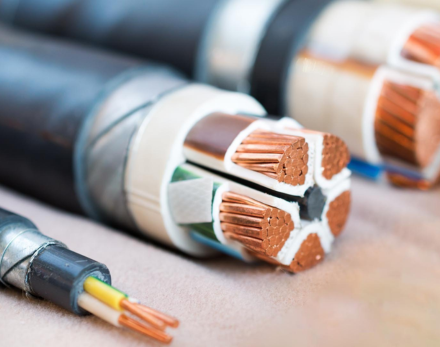
Aluminium Power Cables
Aluminium power cables are widely recognized for their excellent conductivity and lightweight properties, making them a popular choice for various electrical applications. These cables consist of aluminium conductors, which provide a cost-effective alternative to copper while maintaining efficient power transmission. The use of aluminium helps reduce overall weight, facilitating easier installation, especially in overhead power lines and large-scale infrastructure projects. With the growing demand for energy-efficient solutions, aluminium power cables have become essential in both residential and industrial applications, providing reliable performance in power distribution systems.
One of the key advantages of aluminium power cables is their corrosion resistance. Unlike copper, aluminium has a natural oxide layer that protects it from environmental factors, enhancing its durability and longevity. This property makes aluminium cables particularly suitable for outdoor installations and harsh environments where moisture and chemical exposure are prevalent. Additionally, advancements in cable design and manufacturing have led to the development of aluminium alloys that further improve strength and conductivity, ensuring that these cables can meet rigorous performance standards across various applications.
Service Features
- Lightweight Design for Easy Installation
- Corrosion-Resistant Construction
- Flame-Retardant Insulation Options
- Compliance with Safety Standards
Multi Core Round Alluminium Unarmoured Wires & Cables
Aluminium power cables are also designed with safety in mind. Many manufacturers incorporate features such as flame-retardant insulation and additional protective layers to enhance safety and minimize fire hazards. This is especially important in industrial settings where high power loads are common. Furthermore, aluminium cables can be manufactured to comply with national and international safety standards, ensuring that they meet the required specifications for reliable and safe electrical installations. As a result, these cables are trusted by engineers and electricians for critical infrastructure projects, including power plants, substations, and commercial buildings.
In addition to their performance and safety benefits, aluminium power cables are environmentally friendly. The production of aluminium cables requires less energy compared to copper, contributing to a reduced carbon footprint. Furthermore, aluminium is highly recyclable, making it an excellent choice for sustainable electrical solutions. Many industries are increasingly focusing on eco-friendly practices, and opting for aluminium power cables aligns with this goal by providing an efficient and sustainable alternative for electrical installations. Overall, aluminium power cables offer a compelling combination of performance, safety, and environmental benefits, making them a preferred choice for modern electrical systems.
Aluminium power cables are lightweight, cost-effective, and provide excellent conductivity. Their corrosion resistance enhances durability, making them suitable for various applications. Additionally, they require less energy to produce compared to copper cables, contributing to environmentally friendly practices.
Yes, aluminium power cables are designed for outdoor use. Their natural oxide layer protects against environmental factors like moisture and chemicals, ensuring long-lasting performance. Many are also available with additional protective coatings for enhanced durability in harsh conditions.
While aluminium cables are lighter and generally more cost-effective than copper, they have a lower conductivity. However, advancements in aluminium alloy technology have improved their performance. Proper sizing is essential to ensure they meet specific power transmission requirements.
Yes, aluminium power cables can be manufactured to comply with national and international safety standards. Features such as flame-retardant insulation and protective layers are often incorporated to enhance safety and minimize fire hazards, making them suitable for critical installations.


